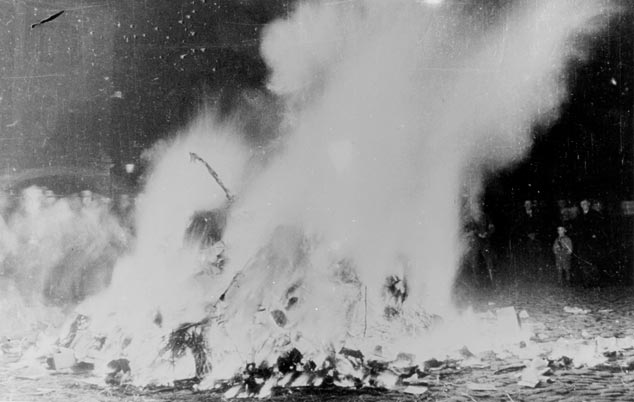
On February 27, 1933, someone sets fire to the Reichstag. The new government takes this as a pretext to suspend important fundamental rights and establish permanent martial law. Germany is on its way to a dictatorship.
While large segments of the population lend their support, or at least take a wait-and-see attitude, the Nazi Party quickly begins to extend its power with a mixture of legal and pseudo-legal measures, as well as open violence.
Democratic institutions like the Reichstag and the governments of the various German states are disabled, in some cases with their own support. Undesirable officials are removed from office.
The National Socialists also have no qualms about applying the power of the state to combat their political opponents. The first concentration camps are established in March 1933. Book-burnings, and especially the first boycotts against Jews, give early hints of the future scope of persecution and violence.
The other political parties and associations underestimate Hitler and the National Socialists. They are caught off guard by the speed and brutality of his actions, are wary of public controversy, or hope to preserve remnants of their old influence by making concessions to the new strongmen. The coalition partners' plan to "tame" Hitler is a dismal failure.
Continue reading: "The 'Führer' and 'Volksgemeinschaft'"
Back to the overview page "The beginnings of the Nazi dictatorship"



